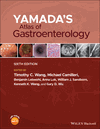Vascular diseases of the liver
Summary
This chapter reviews radiological and pathological images of Budd–Chiari syndrome (BCS), noncirrhotic portal vein thrombosis (PVT), portosinusoidal vascular disease (PSVD), sinusoidal obstruction syndrome (SOS), and peliosis hepatitis. All these diseases have in common an involvement of the hepatic vasculature bed, which consequently causes alterations of the hepatic parenchyma and portal hypertension. In BCS, severity of liver injury will depend on the extent of involvement of the hepatic veins, the time course over which the obstruction of the hepatic veins develops and the delay in receiving an adequate treatment. Noncirrhotic portal vein thrombosis may present as one of two distinct clinical scenarios: acute or chronic PVT. The term PSVD has been recently proposed to describe a broad range of pathological abnormalities that involve the portal venules or sinusoids. SOS is initiated by damage to liver sinusoidal endothelial cells.



